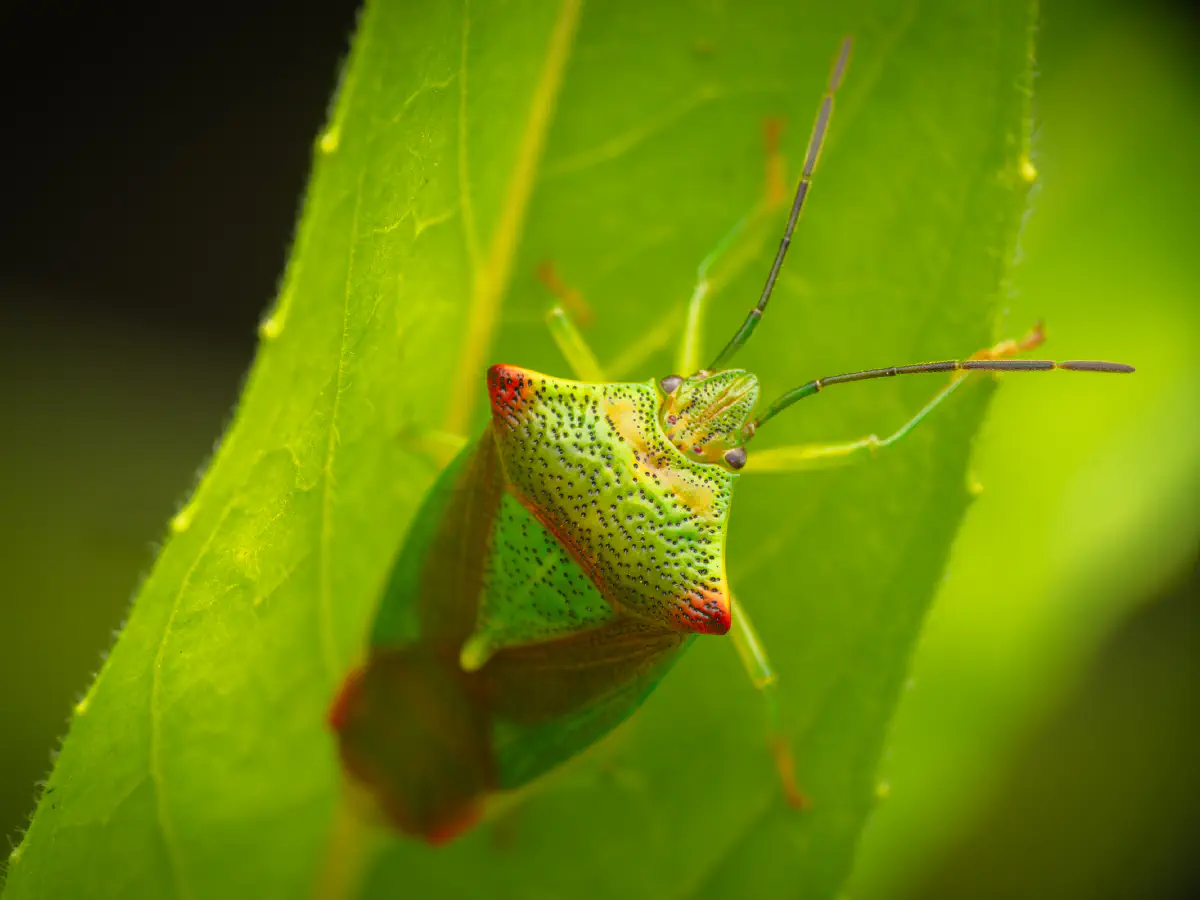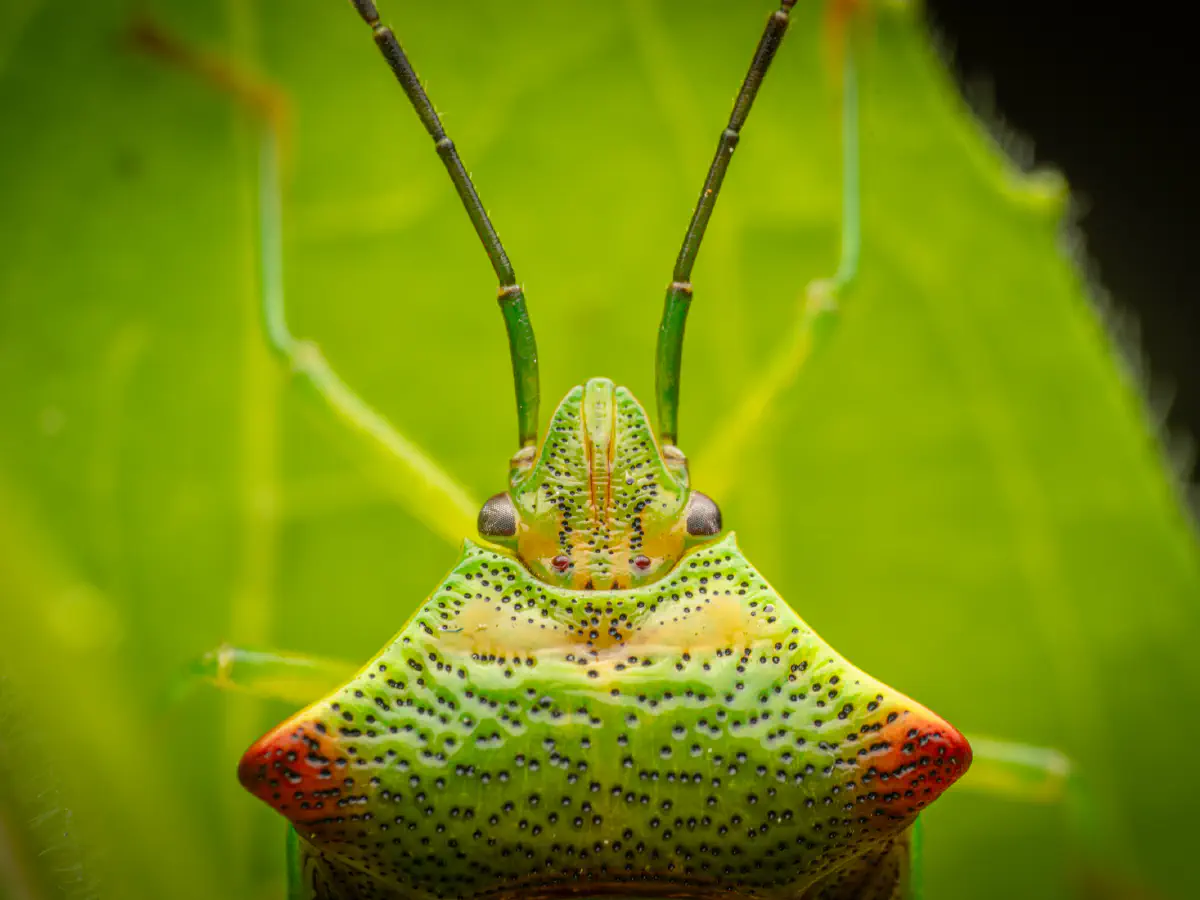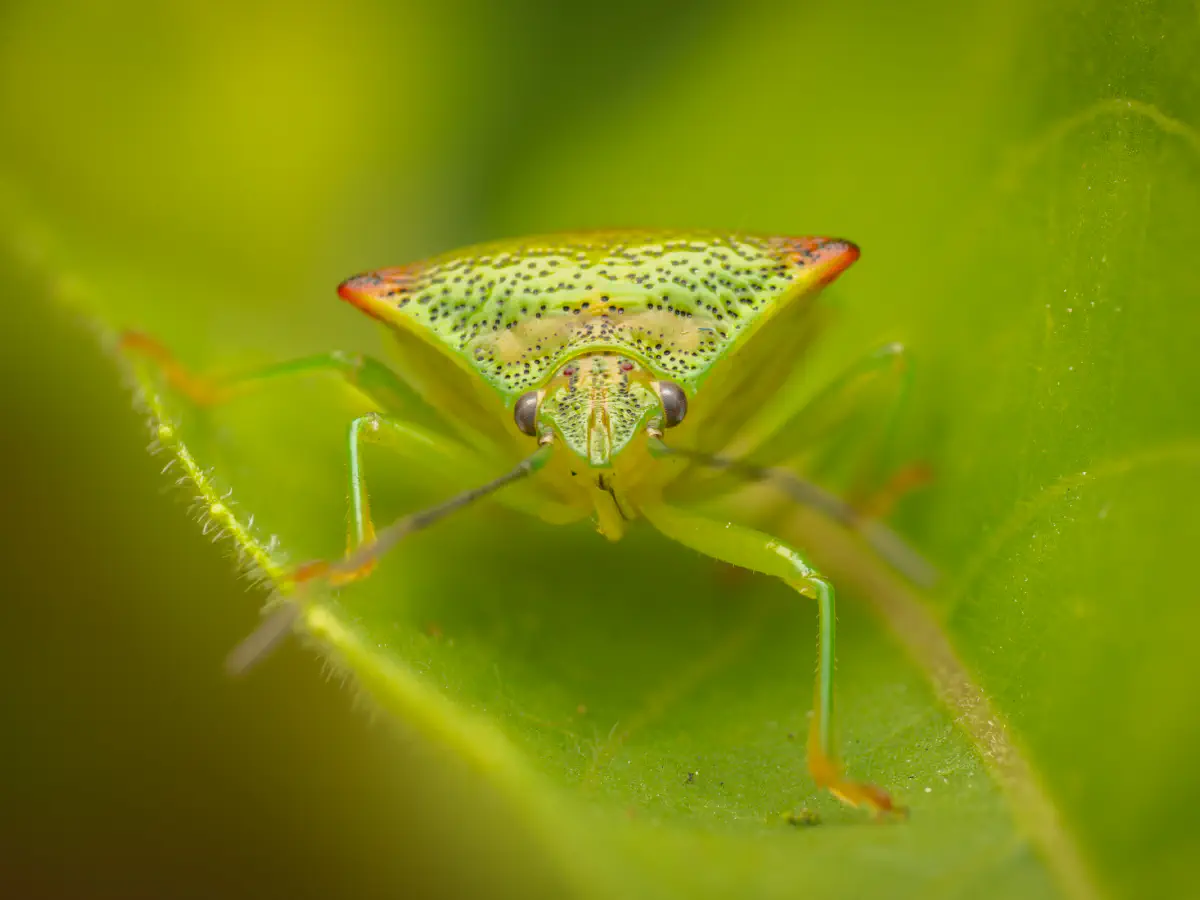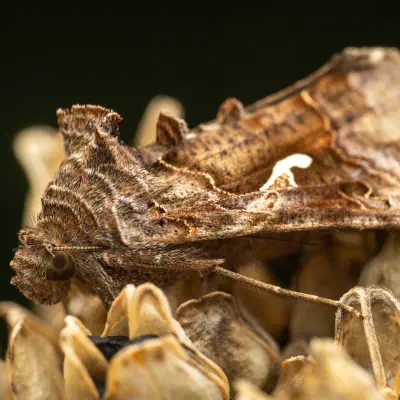The dark green scutellum band is trapezoidal in shape, and extends from the dorsal pronotum to the forewing hemelytral membrane which accounts for the final third of the main body length. The front wings lie flat when the insect is not flying, with the sclerotized pronotum and corium regions coloured dark red. The compound eyes are also red. There is a speckled pigmentation extending from the upper dorsal thorax to the abdominal region. The tarsi
are 2-segmented and antennae 5-segmented. As a heteropteran herbivore of mainly green leafed trees and red berries, the species feeds by injecting saliva enzymes from the posterior section of the rostrum into plant tissue, partially digesting it, then sucks up the resulting liquid through the anterior section of the rostrum. The rostrum is a modified proboscis formed by the interlocking of mandibular and maxillary stylet into a double-tubed elongation covered by the labium. The structure
is needle shaped and penetrates beyond the cuticle and epidermis layer to access the vascular tissue of the mesophyll layer of the leaf. The rostrum pricks into berries to access fruit sugars. As a stress response, A. haemorrhoidale can produce an orange secretion from gland openings in the thorax.




